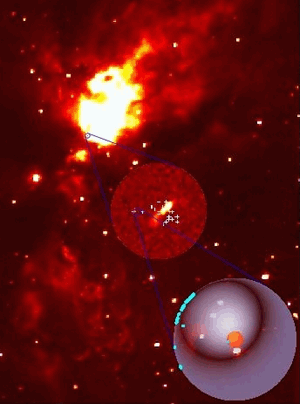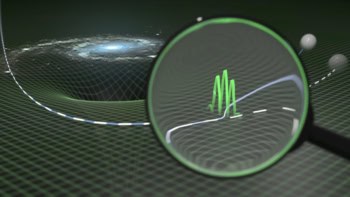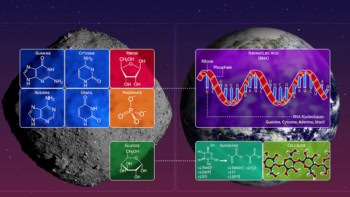Astronomers have spotted an almost perfectly spherical bubble swelling in the star-forming region Cepheus A. The phenomenon has never been seen before and the clouds of water vapour that form the bubble are thought to have been ejected by a young star at its centre. Paul Ho of the Harvard-Smithsonian Centre for Astrophysics in the US led the study of the shell of water vapour, which is about one and a half times the size of the solar system, and cannot be explained by current theories of stellar evolution (J Torrelles et al 2001 Nature 411 277).

Cepheus A is shrouded in gas and dust, but Ho and colleagues were able to observe the clouds because water vapour is a ‘maser’ – microwave amplification by stimulated emission of radiation – and an energy transition between different rotational states of the water molecules amplifies radiation with a frequency of 22 GHz.
The team used the Very Long Baseline Array of the National Radio Astronomy Observatory to make extremely accurate measurements of the velocities of the arcs of water vapour, which make up a sphere perfect to one part in a thousand. “We tracked these masers over a period of weeks, and the arc of water molecules is travelling at nearly 20 000 miles per hour”, says Ho. Calculations show that the shell of material has taken around 33 years to reach its present size.
The shell of water vapour is very thin, which together with its regular shape, strongly suggests that it originates from a short sharp event on the central star. Ho and co-workers also believe this means that the material was ejected from the star, rather than swept up from gas and dust in the region. There is no detectable star at the centre of the bubble, although the astronomical archives reveal that a dim source was spotted there in 1991.
It is well known that powerful jets of gas emanate from the poles of some young stars. Current models of star formation propose that this process carries away excess angular momentum, allowing interstellar material to drift towards the star and form an accretion disk that may eventually give rise to planets. “We were quite surprised to see evidence that this object may be ejecting not jets but spheres of gas”, says Ho.



